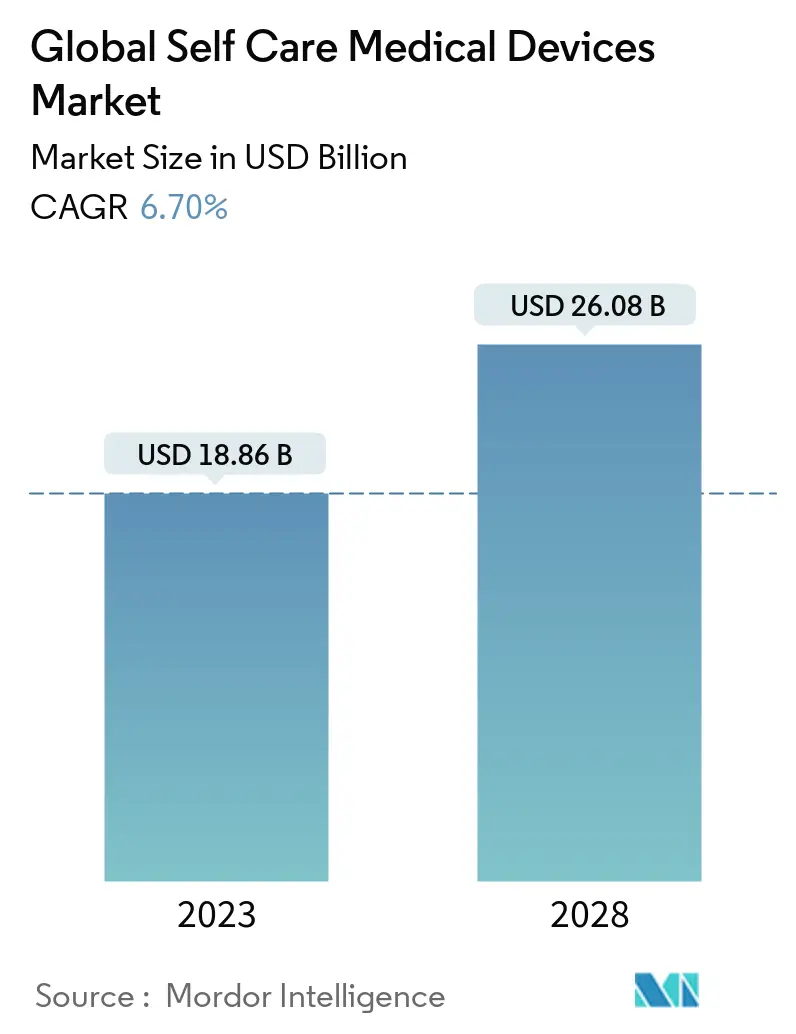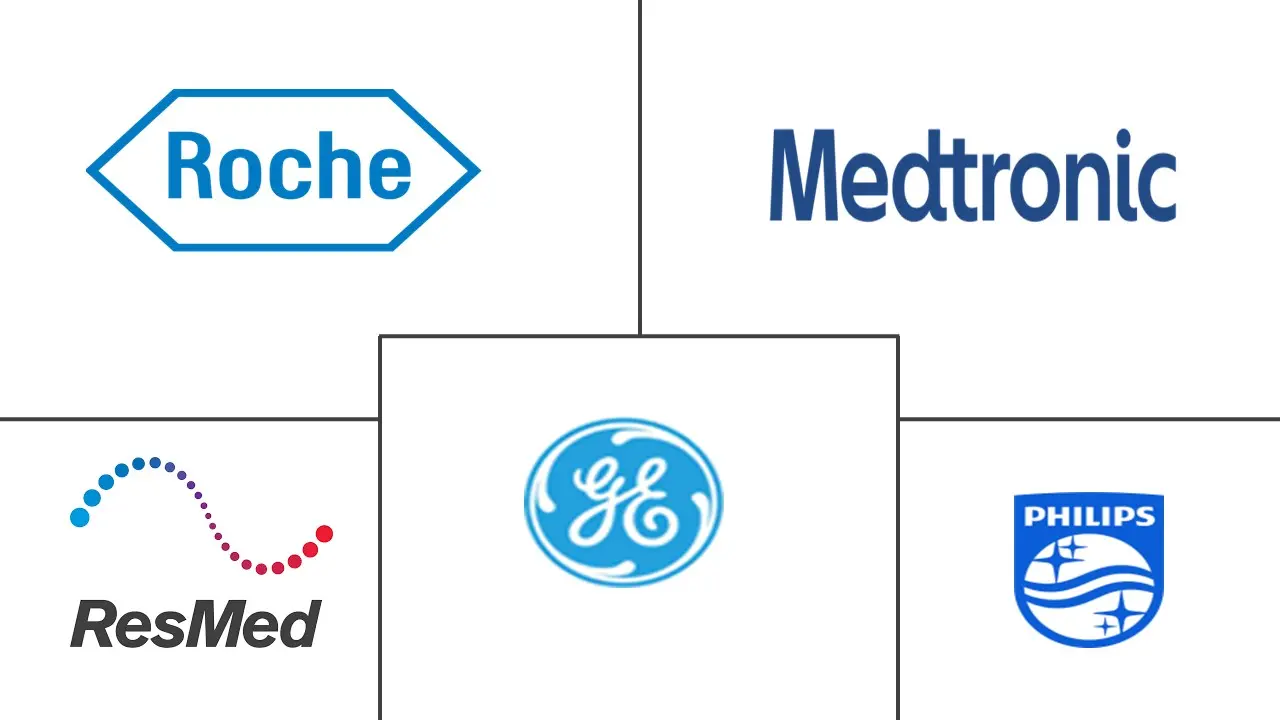Market Size of Global Self Care Medical Devices Industry

| Study Period | 2019 - 2029 |
| Market Size (2024) | USD 20.12 Billion |
| Market Size (2029) | USD 27.83 Billion |
| CAGR (2024 - 2029) | 6.70 % |
| Fastest Growing Market | North America |
| Largest Market | Asia-Pacific |
Major Players
*Disclaimer: Major Players sorted in no particular order |
Need a report that reflects how COVID-19 has impacted this market and its growth?
Self Care Medical Devices Market Analysis
The Global Self Care Medical Devices Market size is estimated at USD 20.12 billion in 2024, and is expected to reach USD 27.83 billion by 2029, growing at a CAGR of 6.70% during the forecast period (2024-2029).
Globally, the COVID-19 pandemic put enormous pressure on hospitals and healthcare systems that were understaffed and overworked. According to the study titled "Home health monitoring during the COVID pandemic: Results from a feasibility study in Alberta primary care," published in the Healthcare management forum in January 2022, Patients were comfortable with the home healthcare monitoring technology, and more than 60% patients reported an improvement in their quality of life after follow-up. Patients also visited their family physician/emergency department less frequently than in the previous year. Moreover, according to the study titled "Role of self-care in COVID-19 pandemic for people living with comorbidities of diabetes and hypertension" published in the Journal of Family Medicine and Primary Care in November 2020, Dietary precautions, medication adherence, home-based exercises, self-monitoring of blood glucose and blood pressure, salt reduction, self-foot examination, and stress management are all suggested as necessary elements of self-care. Thus, to monitor self-care, the demand for self-care devices increased during COVID-19. Thus, self-care medical devices were positively impacted during the COVID-19 pandemic.
There has been an increase in demand for devices that can continuously track patients' physical well-being due to the rising prevalence of chronic and lifestyle diseases such as cardiovascular disease (CVD) and diabetes, as well as rising consumer health awareness. According to the July 2021 update by the World Health Organization, cardiovascular diseases are the leading cause of death around the world, including diseases like coronary heart disease, cerebrovascular disease, rheumatic heart disease, congenital heart disease, and others. Additionally, according to the data published by the International Diabetes Federation (IDF) Diabetes Atlas Tenth Edition 2021, in the year 2021, approximately 537 million adults (aged 20-79 years) were living with diabetes. The same source estimated that the total number of people living with diabetes is projected to rise to 643 million by 2030 and 783 million by 2045. The rising burden of diabetes is likely to increase the demand for more technically advanced self-care medical devices.
Furthermore, according to the WHO, by 2030, one out of every six people on the planet will be 60 years old or older. The number of people aged 60 and up is expected to rise from 1 billion in 2020 to 1.4 billion by 2050. By 2050, the global population of people aged 60 and above will get double to reach 2.1 billion. Between 2020 and 2050, the number of people aged 80 and above is expected to triple, reaching 426 million.
The market players adopted various strategies such as product launches, product developments, collaborations, and expansions to increase their market revenue. For instance, in November 2021, Abbott, the global healthcare launched the FreeStyle Libre system, the continuous glucose monitoring (CGM) technology available for adults and children (above the age of four) living with diabetes in India and women with gestational diabetes (diabetes during pregnancy), allowing them to check their glucose levels at any time and from any location, resulting in better glucose control.
Thus, all aforementioned factors are anticipated to drive the market over the forecast period. However, the availability of alternative devices and the high cost of the products restraint the market over the forecast period.
